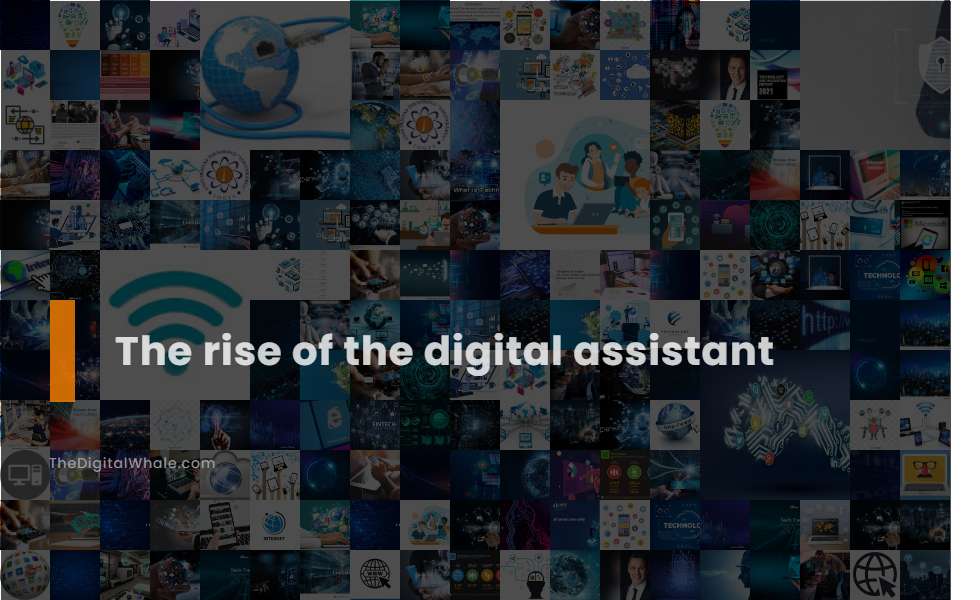The Rise of the Digital Assistant
What is the future of digital assistants? What are the three most popular of these digital assistants? Let's find out more about The Rise of the Digital Assistant.

Voice Recognition: Enables hands-free interaction with digital assistants.
Voice recognition enables hands-free interaction with digital assistants by using Automatic Speech Recognition (ASR) to transcribe spoken words into text, and Natural Language Processing (NLP) to understand and perform tasks based on the user's commands. This technology allows for seamless and convenient interaction with devices such as smart speakers, smartphones, and smart home devices. For more information on this innovative technology, you can visit the detailed article on Voice Recognition.
Natural Language Processing: Allows users to engage with technology naturally, without rigid templates.
Natural Language Processing (NLP) has revolutionized digital assistants by enabling users to interact with technology naturally, without rigid templates, through components like speech recognition, Natural Language Understanding, natural language generation, and dialogue management, allowing for personalized, contextually aware, and emotionally intelligent interactions. For more insights, you can explore how NLP Transforming Digital Assistants & Voice Interactions continues to shape the future of communication between humans and machines.
AI-Powered Learning and Adaptability: Provides personalized responses and remembers previous conversations.
AI-powered learning assistants are revolutionizing education by personalizing learning experiences for students. These intelligent tools create adaptive learning pathways, providing real-time feedback and tailoring content to suit individual strengths, weaknesses, and learning styles. This ensures a more effective and engaging educational journey. By utilizing AI-Powered Learning Assistants, education is becoming more dynamic, as content is continuously adjusted to match individual learning speeds, styles, and interests. This allows for continuous assessment and immediate feedback, which significantly enhances learning outcomes and boosts student engagement.
Context-Awareness: Recognizes the user's location, platform, or context to provide relevant information.
Context-aware digital assistants utilize advanced AI technologies, natural language processing, and sensor integration to discern the user's location, activities, and preferences. This combination allows them to deliver personalized and relevant responses that adjust according to the user's current situation and needs. For more in-depth insights on how these technologies function, visit the Conversational Agents and Context Awareness section on Smythos.
Task Automation: Automates mundane tasks, enhancing user efficiency and reducing support team workload.
Digital assistants have revolutionized the way we handle mundane tasks by automating processes such as task management, calendar integration, email management, and data entry. These technologies enhance user efficiency and reduce workload on support teams by streamlining workflows and centralizing information management. Task automation, using powerful tools like Robotic Process Automation (RPA) and record-and-play capabilities, allows these assistants to mimic human actions, completing repetitive tasks like form filling and data validation with remarkable accuracy. For more insights into the power of automation, you can explore the impact of virtual assistants on workflow efficiency at the IrisAgent Blog, showcasing their role in saving time and reducing errors in 2023.
Related:
What are the benefits of the Internet of Things in the workplace? What is the Internet of Things? Let's find out more about The Internet of Things and Its Impact On the Workplace.
Personalization and Customization: Offers tailored experiences by identifying users and remembering key details.
Personalized digital assistants leverage data collection, machine learning algorithms, and natural language processing to create tailored experiences for users. These sophisticated systems remember user preferences, anticipate their needs, and offer proactive assistance based on past interactions and behavior. As technology advances, the significance of such personalized tools continues to grow, enhancing the way individuals communicate and interact with digital devices. For more insights, visit the article on the Rise of Personalized Digital Assistants in Communication, which delves deeper into this transformative trend.
Real-Time Data Access and Retrieval: Ensures accurate and up-to-date responses.
Digital assistants, such as those described by Rotera, enable healthcare professionals to access and interpret data from various sources in real-time, including internal health system data, EHR APIs, medical journals, and clinical decision support tools, ensuring accurate and up-to-date responses to aid in informed decision-making and efficient workflows.
Proactive Assistance and Suggestions: Anticipates user questions and concerns to prevent frustrations.
A proactive Digital Assistant anticipates user questions and concerns, providing suggestions to stay one step ahead and prevent frustrations, thereby improving user engagement and adoption rates. For more insights on how these intelligent tools can transform user interaction, explore the comprehensive overview provided by Whatfix.
Integration with Third-Party Services: Enhances functionality by integrating with various platforms and devices.
Integration with third-party services enhances the functionality of digital assistants by allowing them to connect with various platforms and devices, such as smart home systems, messaging apps, and web applications. By utilizing APIs, RESTful APIs, and GraphQL, these systems ensure seamless interactions and expanded capabilities.
Scalability and Flexibility: Boosts productivity across multiple business functions such as sales, HR, and IT support.
Digital assistant executives offer scalability and flexibility, allowing businesses to adjust support levels as needed, accommodate changing workloads, and operate across different time zones, thereby boosting productivity in various functions such as sales, HR, and IT support. Moreover, investing in Virtual Assistants provides businesses with the flexibility to scale up or down quickly based on current needs, access specialized skills for short-term projects, and maintain agility in a dynamic market, enhancing productivity and efficiency across multiple business functions.
Related:
How can technology be used to make work more human? How can I ensure my HR technology is effective and efficient? Let's find out more about Getting the Most Out of Technology at Work.
